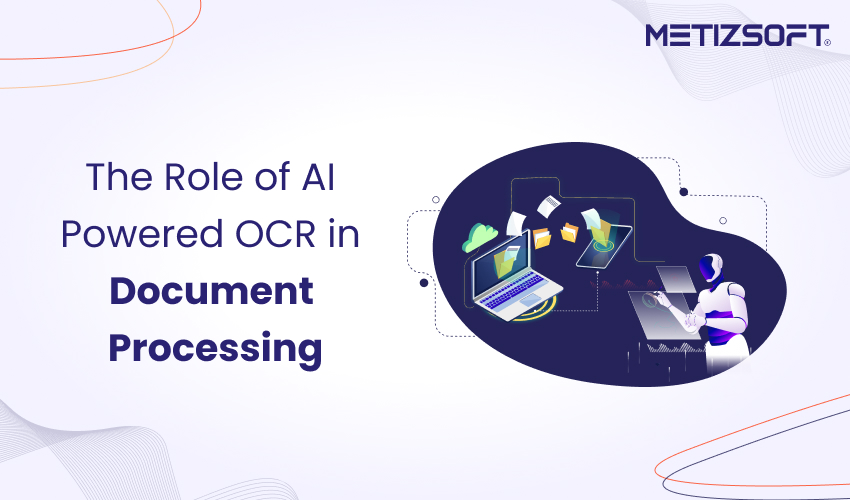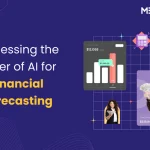
Converting traditional or analog document formats to digital ones is crucial in document processing. As we navigate the ever-evolving digitalization landscape, the emergence of AI-powered Optical Character Recognition (OCR) has significantly transformed document processing.
This advanced OCR process encompasses capturing, extracting, and manipulating data from various business documents, including invoices, contracts, and other crucial paperwork.
The ultimate objective behind OCR implementation is to facilitate seamless information flow, automate operations, and minimize errors.
In this blog post, we have unveiled insightful information about Optical Character Recognition, or OCR. This comprehensive guide will help you understand OCR’s meaning, work cycle, benefits, etc, in detail.
Table of Contents
What is AI-powered Optical Character Recognition (OCR)?
AI-powered Optical Character Recognition (OCR) utilizes artificial intelligence to extract text from various images and documents accurately.
Unlike traditional OCR systems, which rely on predefined rules, AI-powered OCR employs complex machine learning algorithms to analyze and interpret the content meticulously.
This sophisticated approach enables the system to effectively handle various fonts, diverse handwriting styles, and even images of lower quality, resulting in remarkably accurate text extraction and recognition.
How Does AI-enabled OCR Technology Work in Document Processing?
Document processing converts unstructured data, such as images or scanned documents, into structured and organized data that can be easily analyzed and utilized.
Here, we have explored how AI-powered optical character recognition (OCR) technology accurately and efficiently converts images of text into machine-encoded text. This process is explained step by step.
Document Capture: The process begins by converting physical documents into a digital format. This crucial step readies paper documents for digital processing, laying the groundwork for their transformation.
Pre-Processing: First, the digitized documents are cleaned and enhanced by removing noise and imperfections to prepare them for precise data extraction. This is similar to preparing a solid base for a new building, which aims to create the perfect base for a string household.
Document Classification: During this step, documents are categorized. This crucial step streamlines the process and determines the later-stage process for handling documents. This step brings order to the data, ensuring each piece is accurately identified and processed.
Data Extraction: OCR does what it’s renowned for at this stage! The advanced functionality extracts text from images and converts scanned documents into machine-readable text. The magic occurs during this crucial phase, where unstructured data undergoes structured format transformation.
Data Validation and Verification: The extracted data is checked for accuracy and high quality. We compare the data to set standards or databases and can use address verification services to help with this. This is a critical way to control quality and ensure reliable data.
Document Storage and Management: The last step involves securely storing and managing processed documents. Plus, it maintains security standards, organizes documents for easy access, and manages versions. Adequate storage and management ensure the data’s longevity and accessibility.
Key Benefits of Adopting AI-powered OCR
AI-enabled OCR is a game-changer, transforming how we interact with and utilize information from printed materials. Its ability to extract text accurately and efficiently creates new opportunities for businesses and individuals.
Here’s a list of benefits it brings to the table:
Seamless Integration: The OCR solution works smoothly with your current document management systems. It helps improve workflow automation and adds value and efficiency without disrupting your ongoing operations.
Enhanced Accuracy: The AI-powered OCR technology delivers more accurate and reliable results than traditional OCR, mainly when dealing with complex documents.
Compatibility: Whether in a legal firm or the healthcare industry, the OCR is versatile enough to meet diverse requirements, ensuring its applicability and effectiveness across various scenarios.
Secure Data Handling: AI-powered OCR solutions must comply with GDPR or HIPAA-like data privacy laws. They must use robust measures to protect sensitive information and handle data according to legal requirements.
Cloud-based Flexibility: A cloud-based OCR solution allows easy scalability, access, and cost savings. It lets you adjust resources based on your business needs, which helps keep costs down for companies of any size.
Are You Ready to Integrate AI-Powered OCR in Your Existing System?
Integrating AI-powered OCR into any institution/organization’s existing system demands high-end skill and flexibility with advanced tools. To ensure end-to-end OCR implementation, one must adhere to the evolving tech stacks and finance system.
In contrast, you can obtain professional help from our AI experts at your convenience. They stay up-to-date with the latest AI developments and hold a firm grip on bringing intuitive solutions. They ensure seamless OCR integration with existing systems to maximize its benefits.
Final Thoughts
The utilization of AI-powered Optical Character Recognition (OCR) represents a groundbreaking advancement in document processing. This transformative tool demonstrates exceptional efficiency, accuracy, and versatility.
Its purpose extends beyond the mere digitization of documents, as it can unlock the full potential of the information they contain. The innovative AI-powered OCR document processing software is revolutionizing the approach to document handling within businesses.
Moreover, it supports complex layouts, multiple languages, and significant image quality enhancement, making it a game-changing solution to modern document processing. Contact Us to learn more about AI-enabled OCR!
AboutManthan Bhavsar
Related Posts
How Can Shopify PDP Schema Blueprint Boost Your Store’s AI Visibility and Search Ranking?
Table of Contents SummaryIntroductionWhat is Shopify PDP Schema?Why is Schema Important for Shopify SEO?How to Boost Shopify...
Custom AI vs Off-the-Shelf AI: Choose the Right Solutions for Your Business
Table of Contents IntroductionWhat Is Custom AI?What Is Off-the-Shelf AI?Difference Between Custom AI and Off-the-Shelf...

